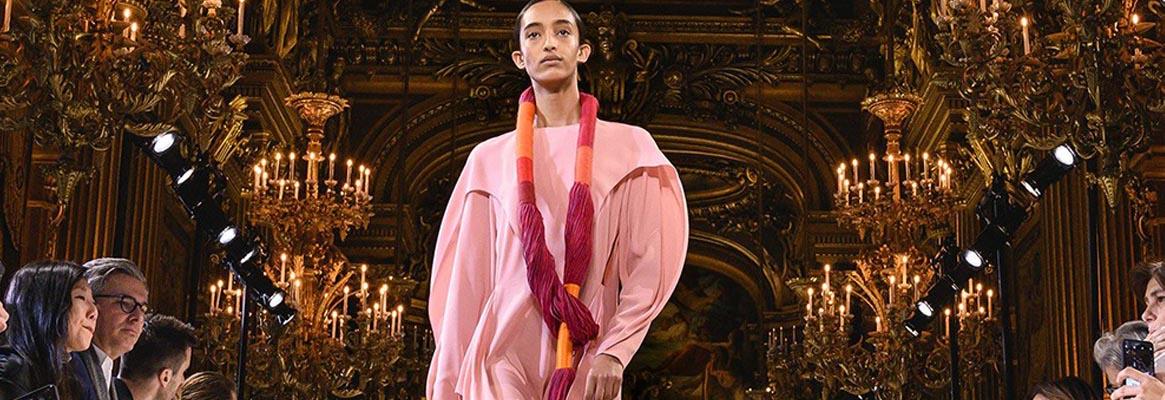Is it possible to foresee the future of fashion? Most science-fiction movies depict a future of fashion where humanity is dressed in tech-infused smart costumes, that almost always give the wearer some sort of superpowers.

Constant technological developments are the core source inspiration for the future of fashion, as we see it portrayed in the movies.
Another scenario is a future of fashion no longer plagued by animal cruelty, modern slavery, depletion of resources, and global pollution, where the only threat to our existence is a malevolent alien civilisation.
However, there's something that will never change - our human nature. It is an insatiable desire to signal status, to showcase 'who we are', hard-wired into our brains, after millions of years of evolution.
Call it, if you like, a body-dependent characteristic.
That is why predicting the future of fashion is not that simple. Fashion is about people and their peers, about social constructs, about showcasing who we are. Fashion is not about the latest technological advancements.
 That is why, when talking about the future of fashion, no subjects revolve around the graphene-based material the shoes of the future might be made of or the type of internet we'll use 20 years from now.
That is why, when talking about the future of fashion, no subjects revolve around the graphene-based material the shoes of the future might be made of or the type of internet we'll use 20 years from now.
What everybody wants to know is how we are going to look in the future: One of the more obvious questions is, 'How is the business suit going to evolve in the future' to more complex ones, as in:
'As our perception of luxury is constructed on heritage, craftsmanship, and high quality, what will happen when robots replace artisans, and countries are dissolved into a global borderless country'?
'Could AI become the craftsman of the future? 'Will the concept of luxury be reshaped according to these new values? If so, which ones?'
Over the past ten years, the world of fashion has been reshaped by the digital revolution, to replace century-old practices with technological marvels, fashion malls with e-commerce behemoths, and traditional materials with breakthrough sustainable alternatives.
 It is true, fashion is evolving and is evolving fast. The boundary between physical and digital fashion is blurring.
It is true, fashion is evolving and is evolving fast. The boundary between physical and digital fashion is blurring.
Take for example Carlings, a Norwegian company which has launched, last year, a streetwear fashion collection in digital format.
Carling's apparel can be bought online and digitally fitted to the buyer's photos, with the idea of ending the 'buy for selfies then discard' trend made popular by social media influencers.
The appearance of digital fashion was somehow forecasted by avatar dating websites such as 'Second Life' and more recently by online gaming scene. Both communities are spending billions of dollars on fashion and accessories that…do not exist.
 Well, it depends on your interpretation of reality so let's say, spend billions on garments that can't be worn on their physical bodies.
Well, it depends on your interpretation of reality so let's say, spend billions on garments that can't be worn on their physical bodies.
A firm believer in a future where the physical realm will be infused with digital content, Matthew Drinkwater, Head of Fashion Innovation Agency, predicts a future where consumers will be able to superimpose digital elements onto their bodies and real-world apparel.
And then again, there are even more puzzling questions related to a post transhumanist world, of no physical bodies:
'Does fashion matter when one's body no longer exists? If so, why, and what kind of fashion?'
Right now, we are still 'stuck' with our bodies so we still need physical fashion. The next 10 years will bring a decade of AI-driven fashion. From innovative materials to unseen designs, this is the most realistic vision of the future of fashion.
And, it might be that one day, the socio-digital construct will force new citizens to wear AR contact lenses, to be able to function as part of the system.
 Hopefully, by then, with the help of AI, gaining AR vision will only require a simple and painless surgery, something like a 'vaccination' procedure that alters the relevant part of the brain, finally allowing us to see digital fashion.
Hopefully, by then, with the help of AI, gaining AR vision will only require a simple and painless surgery, something like a 'vaccination' procedure that alters the relevant part of the brain, finally allowing us to see digital fashion.
But, if that's going to be the case, when every one of us has an AR implant, why would we need physical fashion? Garments, yes. To keep us protected and warm. Fashion? No, it will be all 'in the eye of the beholder…'
This article has not been edited by Fibre2Fashion staff and is re-published with permission from thevou.com








Comments